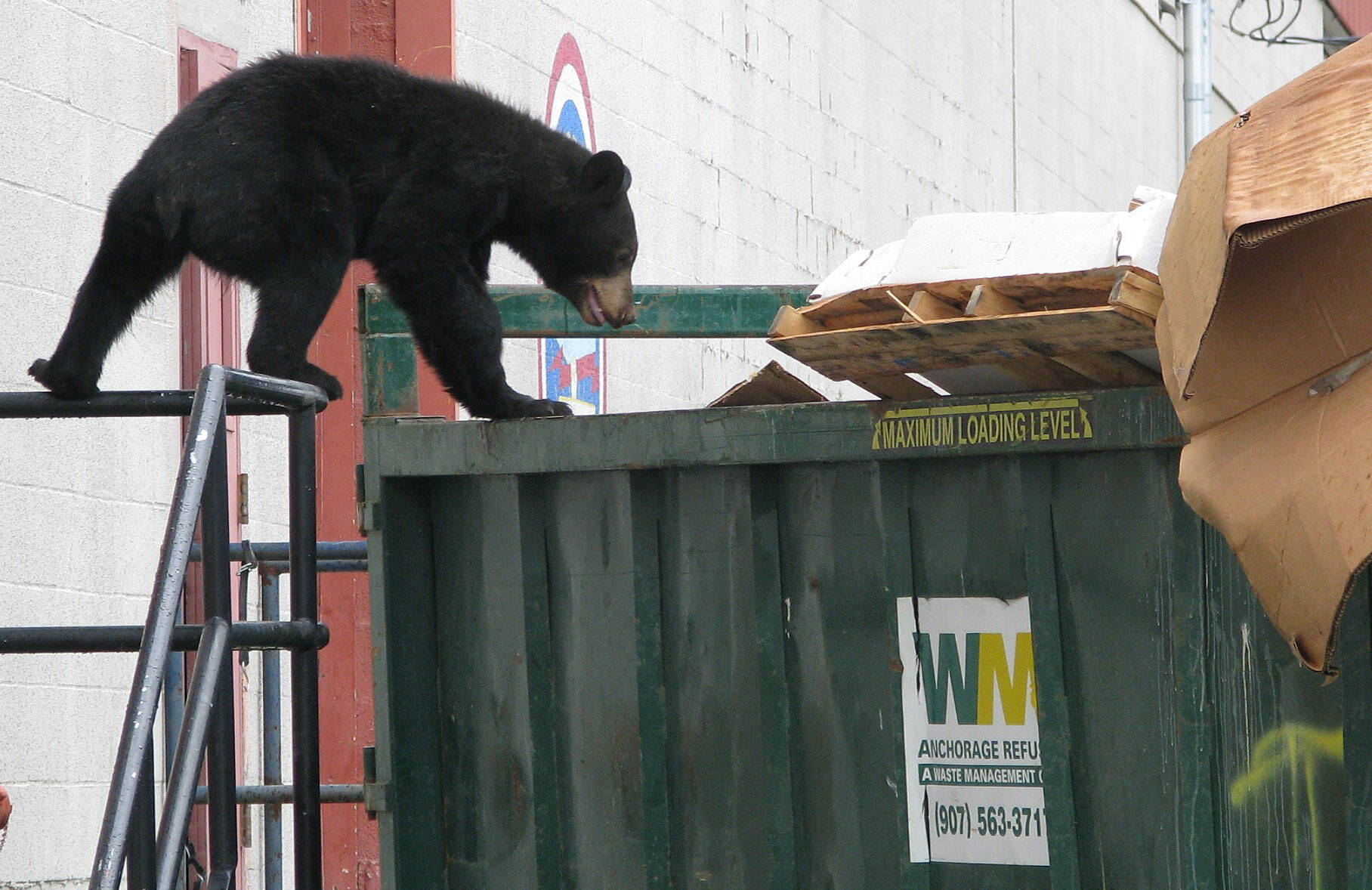Spring officially began March 20, despite the weather. Wildlife unseen for months will return with the sun, bears emerge from dens, and young of every kind will be born.
We Alaskans live with these wild neighbors, and most of us love seeing bears and moose. Safe encounters are positive and memorable.
Conversely, negative interactions are dangerous and bad for animals and people. Spring is an excellent time to review wildlife safety, so encounters will be positive when we are out in the animals’ habitat and when they are around our homes.
Bears
Brown and black bears generally emerge from dens in April and May. Pregnant sows give birth to cubs in their dens in January and February and are generally the last to emerge.
Eating is bears’ main priority in the summer to gain fat reserves in preparation for dormancy the following winter. So, they are attracted to camps and homes with improperly stored food and garbage. Bears may also be drawn to domestic animals (especially chickens) and their food.
To prevent negative encounters around homes, keep garbage indoors or in bear-proof containers and store pet food and livestock feed inside or in bear-resistant containers.
Within city limits is still “bear country,” and precautions should be taken accordingly. Grills, smokers and freezers — anything that might be edible, or smell edible, should stay in protected places when not in use. Consider using an electric fence to protect chickens and livestock.
Negative human-bear interactions may occur when bears perceive a threat to cubs or when defending a food source. You might have heard the correct response to bears depends on the type of bear encountered. The reality is any and every bear may react aggressively when defending food sources or defending young, or even when surprised.
When recreating outdoors, remember that bears don’t like surprises. To avoid surprising a bear and possibly triggering a defensive response, make plenty of noise by talking, shouting or carrying bear bells. Traveling in a group of three or more people and staying together greatly reduces the probability of a negative interaction.
If you encounter a bear, remain calm, talk to the bear in a calm voice so it can identify you as human, back away slowly, and increase the distance between you and the bear. Never run! Know how to use bear spray and carry it in an easily accessible manner.
When camping, store attractants in bear-proof containers and pack out what you pack in.
Moose
Moose are a common sight on the Kenai Peninsula throughout the year. Pregnant cows give birth to one to three calves anytime from mid-May to mid-June and may defend newborn calves aggressively. While many consider moose to be peaceful, they are dangerous when provoked.
More people are hurt in Alaska by moose than by bears. You may see a newborn or young calf and wish it no harm, but moose cannot understand human intentions. By approaching the calf or cow, you will be perceived as a threat, and they will defend their young by charging, kicking and stomping.
Keeping your distance is the most effective way to avoid provoking moose. Do not approach them, especially if you see a calf nearby. If a moose moves in your direction, move farther away and keep distance between you and it. Moose may leave a threatening situation, but they may also become aggressive.
If faced with an aggressive moose, move away as quickly as possible. Unlike bears, running from a moose is usually a good idea because they often won’t chase you very far. Try to keep something between you and the moose, such as a tree, car, fence or other solid object.
What if you see a moose calf by itself? Most likely, the cow is nearby, out of sight. Calves will bed down in an area while the cow forages nearby. The calves may start bawling and crying, which is the cow’s signal to return. If you see a calf in one area for more than 24 hours without seeing an adult, contact the Alaska Department of Fish and Game.
Watching wildlife
Here are some ways to safely watch wildlife. Keep a distance of 100 yards or more when possible. Use binoculars, a spotting scope or a camera with a zoom lens to get an up-close view. Stay on the trail while hiking.
Don’t allow dogs to chase or harass wildlife, which stresses them out. Dogs can injure wildlife, and moose and bears can hurt and kill dogs. Moose and bears may also chase a dog back to its owner, putting you at risk. Instead, learn to recognize signs of stress or alarm in wildlife and give room to those animals communicating distress.
Remember, intentionally or negligently feeding bears and moose is dangerous and illegal. The digestive system of wild animals does not handle garbage or other human-provided products well, and eating these items can make them sick. Beyond the hazards of bears or moose defending food sources aggressively, eating plastics or unnatural foods can kill wild animals.
Resources
Want to learn more about our local wildlife or how to be prepared at home or in the field? Check out the Kenai National Wildlife Refuge’s Visitor Center or visit ADF&G’s “Living with Wildlife” section online https://www.adfg.alaska.gov/index.cfm?adfg=livewith.main.
See wildlife you’re concerned about or have an encounter you’d like to report? Fill out an online report at https://www.adfg.alaska.gov/index.cfm?adfg=reportwildlifeencounter.main.
Sarah Newberry is a Wildlife Technician with the Alaska Department of Fish and Game, and Jacob Pelham is a Wildlife Biologist with the Alaska Department of Fish and Game, and Kris Inman is the Supervisory Wildlife Biologist for the Kenai National Wildlife Refuge.

